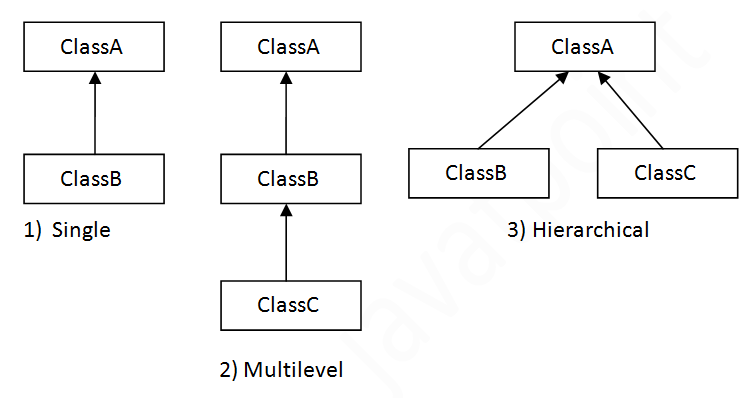|
91-9990449935 0120-4256464 |
Inheritance in JavaInheritance in java is a mechanism in which one object acquires all the properties and behaviors of parent object. The idea behind inheritance in java is that you can create new classes that are built upon existing classes. When you inherit from an existing class, you can reuse methods and fields of parent class, and you can add new methods and fields also. Inheritance represents the IS-A relationship, also known as parent-child relationship. Why use inheritance in java
Syntax of Java InheritanceThe extends keyword indicates that you are making a new class that derives from an existing class. In the terminology of Java, a class that is inherited is called a super class. The new class is called a subclass. Understanding the simple example of inheritance
As displayed in the above figure, Programmer is the subclass and Employee is the superclass. Relationship between two classes is Programmer IS-A Employee.It means that Programmer is a type of Employee. Test it NowProgrammer salary is:40000.0 Bonus of programmer is:10000 In the above example, Programmer object can access the field of own class as well as of Employee class i.e. code reusability. Types of inheritance in javaOn the basis of class, there can be three types of inheritance in java: single, multilevel and hierarchical. In java programming, multiple and hybrid inheritance is supported through interface only. We will learn about interfaces later. 
Note: Multiple inheritance is not supported in java through class.When a class extends multiple classes i.e. known as multiple inheritance. For Example: 
Q) Why multiple inheritance is not supported in java?To reduce the complexity and simplify the language, multiple inheritance is not supported in java. Consider a scenario where A, B and C are three classes. The C class inherits A and B classes. If A and B classes have same method and you call it from child class object, there will be ambiguity to call method of A or B class. Since compile time errors are better than runtime errors, java renders compile time error if you inherit 2 classes. So whether you have same method or different, there will be compile time error now. Test it NowCompile Time Error
Next TopicAggregation in java (HAS-A)
|













